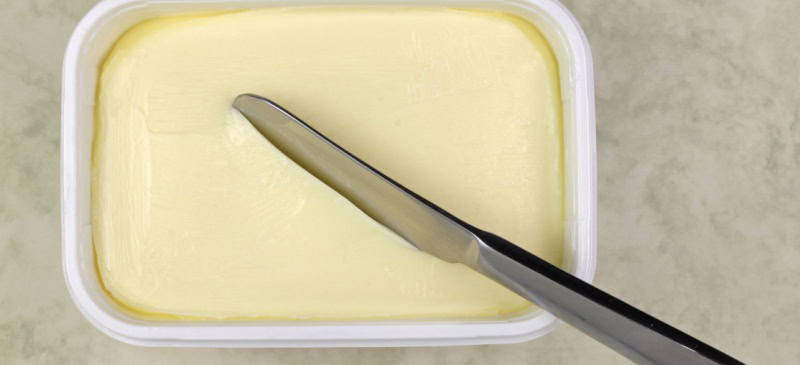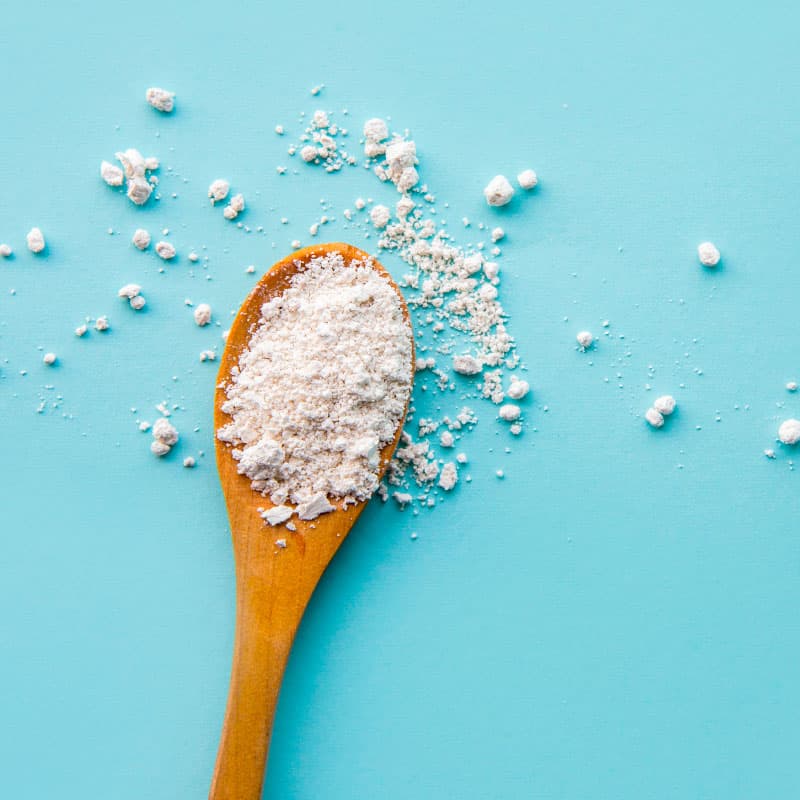This Dr. Axe content is medically reviewed or fact checked to ensure factually accurate information.
With strict editorial sourcing guidelines, we only link to academic research institutions, reputable media sites and, when research is available, medically peer-reviewed studies. Note that the numbers in parentheses (1, 2, etc.) are clickable links to these studies.
The information in our articles is NOT intended to replace a one-on-one relationship with a qualified health care professional and is not intended as medical advice.
This article is based on scientific evidence, written by experts and fact checked by our trained editorial staff. Note that the numbers in parentheses (1, 2, etc.) are clickable links to medically peer-reviewed studies.
Our team includes licensed nutritionists and dietitians, certified health education specialists, as well as certified strength and conditioning specialists, personal trainers and corrective exercise specialists. Our team aims to be not only thorough with its research, but also objective and unbiased.
The information in our articles is NOT intended to replace a one-on-one relationship with a qualified health care professional and is not intended as medical advice.
Margarine Benefits and Downsides — and How It Compares to Butter
July 22, 2024

For many who seek to eat healthfully, there remains a lot of confusion when it comes to margarine. It’s one of the most common ingredients in the average kitchen but also misunderstood.
For example, while many praise margarine as a heart-healthy, budget friendly form of fat, others claim that it can clog the arteries, increase inflammation and pile on the extra pounds.
Similarly, the comparison to butter is often made, and confusion also persists. Butter gets called a “healthy fat” by some experts while others say that because it’s largely composed of saturated fat, it should be avoided.
What is true? Is margarine healthy? Is it better than butter? This article will take a closer look at the health benefits and risks of margarine to help you determine.
What Is Margarine?
Margarine is a type of condiment that is commonly used for cooking and baking. It’s also used as a spread, such as on toast, and can help add a bit of flavor to dishes.
The history of margarine can be traced back to 1869, when it was invented during a shortage of butter in France. It was first created by French chemist Hippolyte Mège-Mouriès and was originally made using beef tallow and skimmed milk.
Before trans fat was restricted or banned in many countries, including the U.S. in 2015, margarine producers added hydrogen to margarine to convert the liquid oils into solid fats — which made them more spreadable. These were called “hydrogenated” or “trans” fats, which become linked to an increased risk of heart disease.
Margarine today is not hydrogenated or even partially hydrogenated. Most types are made of vegetable oils, which are high in polyunsaturated fatty acids. Margarine is produced by beating oil with water to form a solid product, after which other ingredients are added, such as emulsifiers and coloring agents. These modify the texture and appearance of the final product.
Types
Margarine typically comes in three types:
- Hard margarine: This type closely mimics butter and comes in sticks. It’s often used in cooking or baking. It tends to higher in fat, including more saturated fats, than other types of margarine. It comes salted or unsalted.
- Soft vegetable fat spread: High in monounsaturated or polyunsaturated fats, it’s made from popular vegetable oils like safflower, canola, sunflower, soybean or even olive oil. This can include whipped margarine.
- Bottled liquid margarine: Most commonly used for cooking or topping dishes, it’s made from vegetable oils that are high in unsaturated fat.
Certain brands offer vegan versions of the same margarine types. Vegan margarine is diary-free, gluten-free and non-GMO.
Nutrition Facts
Margarine varies quite a bit in terms of the vegetable oils used, the ratio of saturated fat versus unsaturated (both monounsaturated and polyunsaturated), as well as the percentage of overall fat (35 percent to 80 percent).
Hard margarine, for example, contains more calories and fat — all kinds, even trans fat — compared to soft margarine, for example. Both contain vitamins A, K and E.
Hard margarine (stick)
Looking at servings, one pat (one inch square and one-third inch high) is the standard serving. According to the USDA, one pat (5 g) margarine with 80 percent fat in salted stick form contains:
- Calories: 36
- Total Carbohydrates: 0.03 g
- Fiber: 0 g
- Sugar: 0 g
- Total Fat: 4.04 g
- Saturated Fat: 0.76 g
- Polyunsaturated Fat: 1.22 g
- Monounsaturated Fat: 1.94 g
- Trans Fat: 0.75 g
- Protein: 0 g
- Cholesterol: 0 mg
- Sodium: 37.6 mg (2% DV*)
- Vitamin A: 41 mcg (5% DV)
- Vitamin K: 4.65 mcg (4% DV)
- Vitamin E: 0.45 mg (3% DV)
Soft margarine spread (tub)
One average serving or a teaspoon (4.8 g) margarine spread, 35–39 percent fat, in a tub contains:
- Calories: 17
- Total Carbohydrates: o.07 g
- Fiber: 0 g
- Sugar: 0 g
- Total Fat: 1.82 g
- Saturated Fat: 0.42 g
- Polyunsaturated Fat: 0.77 g
- Monounsaturated Fat: 0.54 g
- Trans Fat: 0 g
- Protein: 0 g
- Cholesterol: 0 mg
- Sodium: 28 mg (1% DV*)
- Vitamin A: 64.8 mcg (7% DV)
- Vitamin E: 0.643 mg (4% DV)
- Vitamin K: 3.58 mcg (3% DV)
*Daily Value: Percentages are based on a diet of 2,000 calories a day.
Benefits
Margarine is rich in polyunsaturated fatty acids, which are considered a heart-healthy form of fat. According to one study published in American Journal of Clinical Nutrition, swapping out saturated fats for polyunsaturated fats was associated with a lower risk of coronary heart disease.
Not only that, but it’s also rich in plant sterols and stanols. These compounds have been shown to reduce levels of bad LDL cholesterol, which is a major risk factor for heart disease.
However, although it may help lower cholesterol levels, other research has found that it may not be linked to a lower risk of heart disease.
Compared to butter, margarine is lower in saturated fat and calories plus is cholesterol-free. New margarine products are very low in trans fat.
Margarine is also a popular choice for those on a budget, as it’s typically much more cost-effective than butter or other types of cooking oils.
Margarine can be a good alternative to butter for those with specific dietary restrictions, including vegans. Because it’s made from vegetable oils instead of milk, it can also be enjoyed by those limiting dairy for personal reasons or health issues.
Downsides
Margarine today is not supposed to contain any trans fat, as it was prohibited in the U.S. in 2015 by the FDA. But when it was created, margarine was predominantly made out of unhealthy trans fat.
Trans fat is known as the artery-clogging fat formed when vegetable oils are hardened into margarine or shortening. Trans fat increases blood levels of LDL, or bad, cholesterol, and it also lowers levels of good HDL cholesterol.
Research from Harvard Medical School that included controlled trials and observational studies found that trans fatty acid consumption from partially hydrogenated oils raises the risk of coronary heart disease.
Some varieties of margarine, particularly hard margarine, may still contain trans fat. It’s important to examine nutrition labels.
Margarine is also an ultra-processed food, with emulsifiers, coloring agents and other ingredients. Studies show that eating more processed foods may be tied to a higher risk of cancer, heart disease and even death. One small study even found that margarine spreads are associated with an increased risk of developing type 2 diabetes.
Another important consideration is the amount of omega-6 fatty acids that margarine contains. While we do need a mix of both omega-3 and omega-6 fatty acids in our diets, getting the right ratio of these fats is crucial to protecting against inflammation and disease.
Unfortunately, most of us get way too many omega-6 fatty acids in our diets and not enough omega-3s. Although some research suggests that a ratio of 1:1 is ideal for these fatty acids, the ratio in the average Western diet is a staggering 15:1.
Margarine vs. Butter
The main difference between margarine vs. butter is the way that the two ingredients are produced.
Butter is a dairy product made by churning milk. Meanwhile, margarine is a heavily processed ingredient made from vegetable oil that has been chemically altered in a lab.
The nutritional value of the two ingredients is also very different.
Because margarine is made of vegetable oil, it’s almost entirely composed of polyunsaturated fatty acids. Butter, on the other hand, is primarily saturated fat.
Certain varieties of butter, like grass-fed butter, are rich in several important nutrients as well, including vitamin K2. Studies show that vitamin K2 could play a key role in bone strength, heart health and cancer prevention.
Butter is also rich in several important fatty acids, including butyrate, omega-3 fatty acids and conjugated linoleic acid.
Compared to butter, margarine is much lower in these essential nutrients. It often contains some fat-soluble vitamins like vitamin A and vitamin E, along with omega-6 fatty acids and small amounts of sodium.
Final Thoughts
- What is margarine? It is a popular condiment that is made from vegetable oil, which undergoes hydrogenation or interesterification to help harden the texture.
- There are several key differences between margarine vs. butter, especially when it comes to their nutrient profile and the fatty acids that they contain.
- Margarine is rich in heart-healthy polyunsaturated fats as well as plant sterols and stanols. It’s also budget-friendly and suitable for those with certain dietary restrictions.
- However, it’s also heavily processed and may contain high amounts of omega-6 fatty acids and trans fats, which can be harmful to health.
- Regardless of which product you choose when deciding between margarine vs. butter, it’s recommended to select grass-fed varieties of butter or margarine that is free of hydrogenated fats whenever possible.









